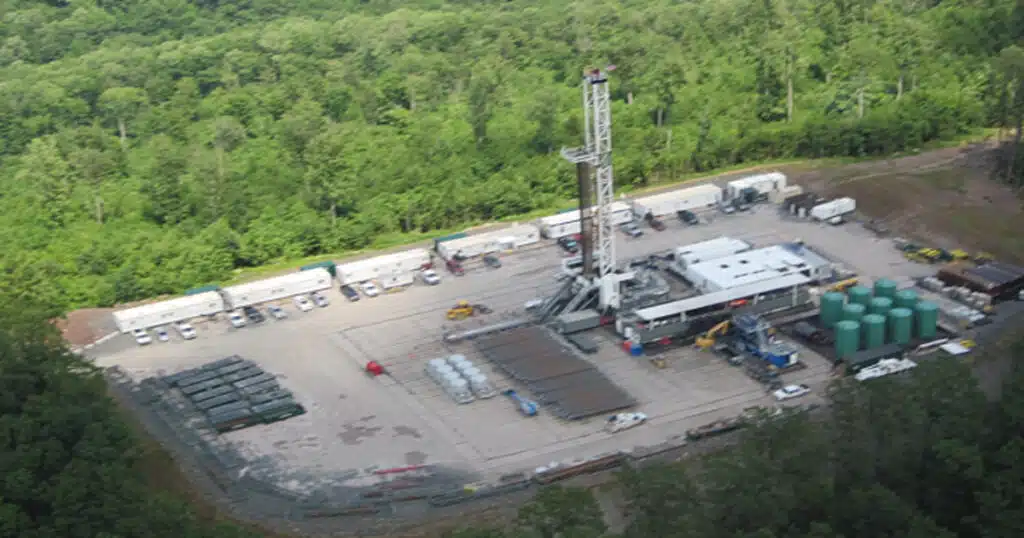
Iceland Volcano Challenges Scientific Beliefs About Volcano Formation
It isn’t every day researchers re-evaluate and change the way they’ve been approaching their field of study, but that’s exactly what’s happened for Matthew Jackson, an earth scientist at the University of California Santa Barbara, and thousands of his fellow volcanologists worldwide.
Observing the newly-formed Fagradalsfjall volcano in Iceland, Jackson and collaborators discovered a process far more dynamic than anything anticipated from the two centuries or so scientists have been studying volcanoes.
“Just when I think we’ve gotten close to figuring out how these volcanoes work, we get a big surprise,” Jackson said. The paradigm-shifting findings are published in the journal Nature.
Jackson was on sabbatical in Iceland when he witnessed the birth of Fagradalsfjall, a fissure in the lowlands of southwest Iceland that split and exploded with magma in March 2021. By the time the fissure opened up, he said, everyone on the Reykjanes Peninsula was ready for an eruption of some kind.
“The earthquake swarm was intense,” he said, adding there were some 50,000 or so temblors, some of a magnitude 4 and higher, that shook the region for weeks and kept many in Iceland’s population anxious.
Lava eventually bubbled up and spattered from the hole in the ground in the relatively barren Geldingadalur region. Scientists and onlookers converged on the area to see the formation of the planet’s freshest crust. Thanks to winds that cleared the site of noxious gases, not to mention the slow emergence of the lava, researchers were able to get close enough to sample the lava.
Led by Sæmundur Halldórsson of the University of Iceland, a team of geologists sought to find out “how deep in the mantle the magma originated, how far beneath the surface it was stored before the eruption and what was happening in the reservoir both before and during the eruption.”
Jackson explained that “the assumption was that a magma chamber fills up slowly over time, and the magma becomes well mixed…then it drains over the course of the eruption.” Based on that understanding, he said, those studying volcanic eruptions do not expect to see significant changes in the chemical composition of the magma as it flows out of the earth.
“This is what we see at Mount Kilauea, in Hawaii…You’ll have eruptions that go on for years, and there will be minor changes over time,” he said.
But the Fagradalsfjall eruption showed more compositional variability than the Kilauea eruptions showed in decades. The total range of chemical compositions that were sampled at the one Fagradalsfjall eruption over the course of the first month spanned the entire range that had ever erupted in southwest Iceland over the last 10,000 years.”
The variability of the lava is a result of subsequent batches of magma flowing into the chamber from deeper in the mantle.
“Picture a lava lamp,” Jackson said. “You have a hot light bulb at the bottom, it heats up a blob and the blob rises, cools and then sinks. We can think of the Earth’s mantle — from the top of the core to under the tectonic plates — operating much like a lava lamp.”
As the heat causes regions of the mantle to rise and plumes form and move buoyantly upward toward the surface, he explained, molten rock from those plumes accumulates in chambers and crystallizes, gases escape through the crust and pressure builds until the magma finally finds a way to escape.
For the first few weeks of the Fagradalsfjall eruption, what finally emerged was magma that had been accumulating in a volcanic reservoir situated about 10 miles below the surface. After about a month, evidence showed the chamber was being recharged by deeper melts with different compositions that were fed from different regions of the mantle plume beneath Iceland.
The new magma had a higher content of magnesium and a higher proportion of carbon dioxide gas, indicating that fewer gases from the deeper magma had escaped.
After about two months, the the flow was mostly comprised the deeper, enriched magma. Such a rapid, extreme change in magma composition at a plume-fed hot spot had never before been observed by scientists in near real-time.
Jackson said such compositional transitions may not be so rare, but opportunities to sample eruptions at such an early stage have not been common. Prior to the Fagradalsfjall eruption, the most recent eruptions on Iceland’s Reykjanes peninsula had occurred eight centuries ago.
Jackson suggests Fagradalsfjall may signal the start of a new, possibly centuries-long volcanic cycle in southwest Iceland.
“We often don’t have a record of the first stages of most eruptions because these get buried by lava flows from the later stages,” he said.
Results from the Fagradalsfjall volcano will cause researchers to rethink how models of volcanoes around the world are built. although it’s not yet clear how representative the Icelandic phenomenon is of other volcanoes.
Still, said Jackson, it’s a reminder that the Earth has secrets yet to discover .
“So when I go out to sample an old lava flow, or when I read or write papers in the future…it’ll always be on my mind,” he said. “This might not be the complete story of the eruption.”



